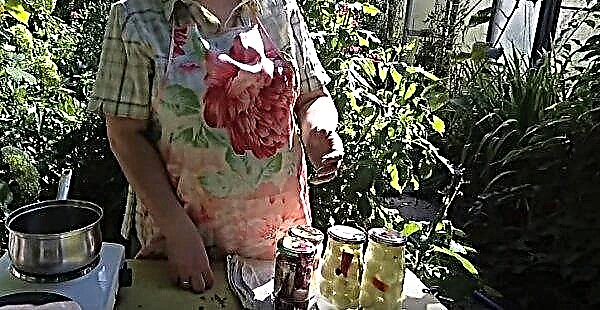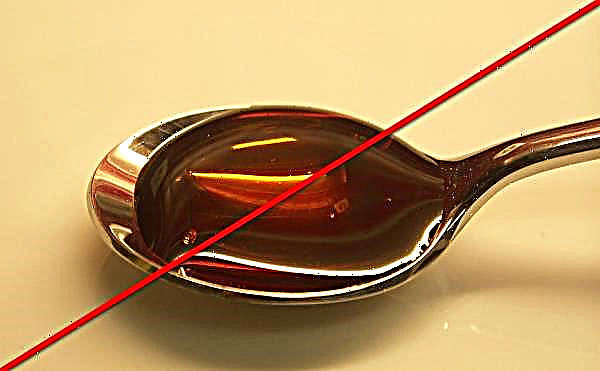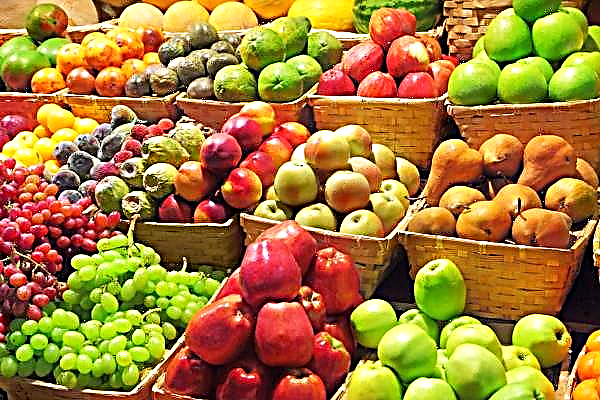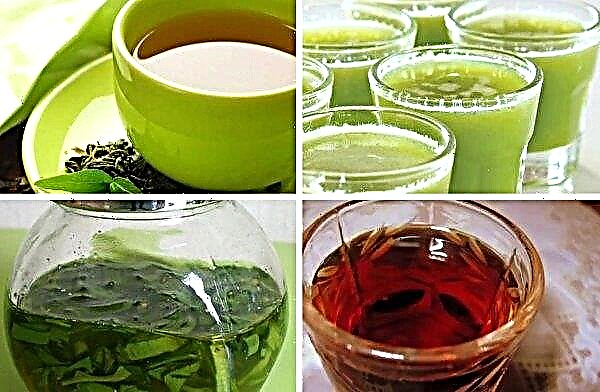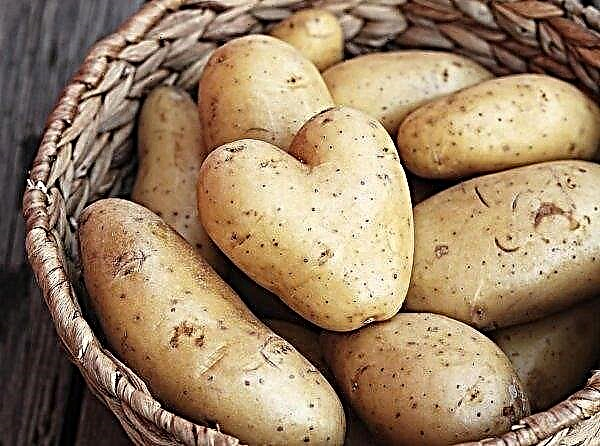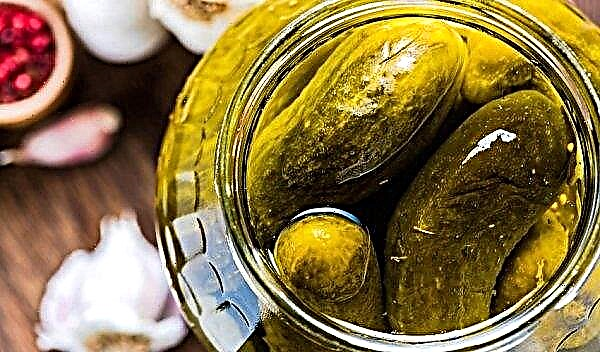White cabbage has long been present on our tables. Even distant ancestors appreciated it for its unpretentiousness, accessibility and versatility in use. In addition to nutritional value, cabbage heads also have many useful properties. We will talk about this in detail later.
Nutritional value and chemical composition
Cabbage is a low-calorie product, and at the same time it has a large amount of nutrients in the composition. Nutritional value of a vegetable:
- proteins - 1.8;
- fats - 0.2;
- carbohydrates - 4.7;
- water - 90.4;
- fiber ash - 0.7;
- calories - 28 kcal per 100 grams of product.
Did you know? Ancient Roman scholars such as Cato, Pliny the Elder and Columella wrote about the cultivation and useful properties of cabbage.
The chemical composition of the vegetable is represented by a rich set of vitamins and minerals. Vitamins:
Vitamins:
- thiamine (B1);
- riboflavin (B2);
- choline (B4);
- pyridoxine (B5);
- folates (B9);
- ascorbic acid (C);
- tocopherol (E);
- phylloquinone (K).
- potassium;
- calcium;
- magnesium;
- sodium;
- sulfur;
- phosphorus;
- chlorine;
- iron;
- manganese;
- zinc;
- copper.
- It has a positive effect on the human body due to such factors:
- diuretic effect;
- knits and removes sputum from the lungs and bronchi;
- eliminates intestinal dysbiosis;
- relieves swelling with bruises;
- improves digestion;
- supports the immune system;
- nourishes the brain;
- strengthens tooth enamel;
- strengthens bones and muscle fibers;
- supports the heart muscle;
- cleanses blood vessels;
- cleanses the blood of toxins and cholesterol;
- improves the functioning of the nervous system.
- Side effects:
- my stomach hurts;
- bloating;
- renal colic (in children).
- cholecystitis;
- gastrointestinal ulcer;
- renal failure;
- pancreatitis
- Sauce has long been treated for digestive problems, strengthened immunity, especially in the off-season.
- Applying leaves is used at home for a variety of purposes - for example, as a remedy for headache, for resorption of hematomas or nodes from injections.
- Cabbage brine helps with diseases of the liver and excess blood sugar.
- A decoction of leaves is used for diseases of the throat.
- Juice mixed with natural honey successfully treats bazedovo disease.
- Cabbage in any form is useful for the intestines - eliminates putrefactive processes.
- Lotions of shredded leaves successfully cope with eczema and other inflammatory processes on the skin.
- borscht;
- cabbage soup;
- cabbage rolls;
- stewed cabbage with meat;
- pies;
- vegetable cutlets;
- vareniki;
- Fresh vegetable salads.
- Too large a head of cabbage may indicate that the vegetable contains nitrates (it is advisable to ask the seller for a certificate of analysis for chemicals).
- If water is released when a leaf is pressed, it means that the head of cabbage stood in the water for a long time to give it freshness.
- There should be no damage, wormholes and rot on the leaves.
- A healthy head of cabbage is resilient and well packed.

The effect of cabbage on the body of men and women
Cabbage has beneficial properties for children and the elderly, for men and women. This vegetable contains, albeit in small quantities, the essential amino acids lysine and methionine, which play an important role in human brain activity.
Benefit
It is recommended to use the product both fresh and pickled.
 Regular consumption of raw cabbage is beneficial for stomach ailments as a prophylactic.
Regular consumption of raw cabbage is beneficial for stomach ailments as a prophylactic.Harm and contraindications
Abuse of this vegetable can cause negative consequences.
It is contraindicated to use the product with exacerbation of the following diseases:
Important! Young cabbage contains a maximum of folic acid, so this vegetable is recommended for pregnant women.
Consumption rate per day
For an adult, it is enough to consume 100-150 g of fresh, pickled or stewed product per day. For children, the rate of consumption of vegetables is up to 100 g per day. Heat-treated cabbage is introduced into the children's diet starting from 8 months, and raw - from 2 years of age.
Heat-treated cabbage is introduced into the children's diet starting from 8 months, and raw - from 2 years of age.
Scope of application
Due to its healing properties, this vegetable is successfully used in medicine, cosmetology and nutrition. And cooking is simply replete with a variety of recipes, where cabbage acts as the main component or only sets off the taste of other products.
In folk medicine
Folk healers use cabbage both externally and internally. The raw fruit contains tartronic acid, which helps prevent atherosclerosis, so it’s good for older people to drink freshly squeezed juice.  Other medicinal properties and methods of using the vegetable:
Other medicinal properties and methods of using the vegetable:
Important! In the presence of chronic diseases of the internal organs, before using cabbage for treatment, it is necessary to consult a doctor.
In cooking
Fresh and pickled cabbage is used to prepare first and second courses. The product is used in salads and snacks, it is combined with meat, fish, and other vegetables. To list everything that can be cooked with this vegetable is unrealistic. The most common cabbage dishes on our tables:
The most common cabbage dishes on our tables:
For weight loss
For girls who are following the figure, cabbage is just a godsend. A low-calorie product removes excess cholesterol from the body, positively affects metabolic processes and digestion, which is useful for losing weight. A small amount of fat and carbohydrates, as well as the presence of choline accelerate the process of converting fat cells into energy. Due to its rich vitamin composition, the vegetable is recommended for dietary nutrition during the recovery period after illness or surgery.
Due to its rich vitamin composition, the vegetable is recommended for dietary nutrition during the recovery period after illness or surgery.
Did you know? The stalks of the Jersey cabbage cultivar, which is grown on the Channel Island in Jersey, go to the manufacture of some furniture parts and canes.
Features of selection and storage
For a vegetable to be really useful, you need to be able to choose it correctly. Criterias of choice:
 Both pediatricians and therapists talk about the benefits of cabbage, noting the high content of vitamin C, which is important for immunity. In addition to its beneficial properties, it is simply a delicious vegetable that can diversify both everyday and festive tables.
Both pediatricians and therapists talk about the benefits of cabbage, noting the high content of vitamin C, which is important for immunity. In addition to its beneficial properties, it is simply a delicious vegetable that can diversify both everyday and festive tables.
